Installing RevyOS on the LicheePi 4A
This page provides a tutorial for flashing the LicheePi 4A image on Linux. If you want to flash the image on a Windows, or view other image flashing tutorials, please view the links in the table below.
| Other Flashing Tutorial | Link |
|---|---|
| LicheePi4A (Installing using Windows) | Installation guilde for Windows |
| Milk-V Pioneer | Flashing Tutorial |
Important!
Before proceeding, compare your board with the image below to ensure they match. Continue only if the boards are identical.
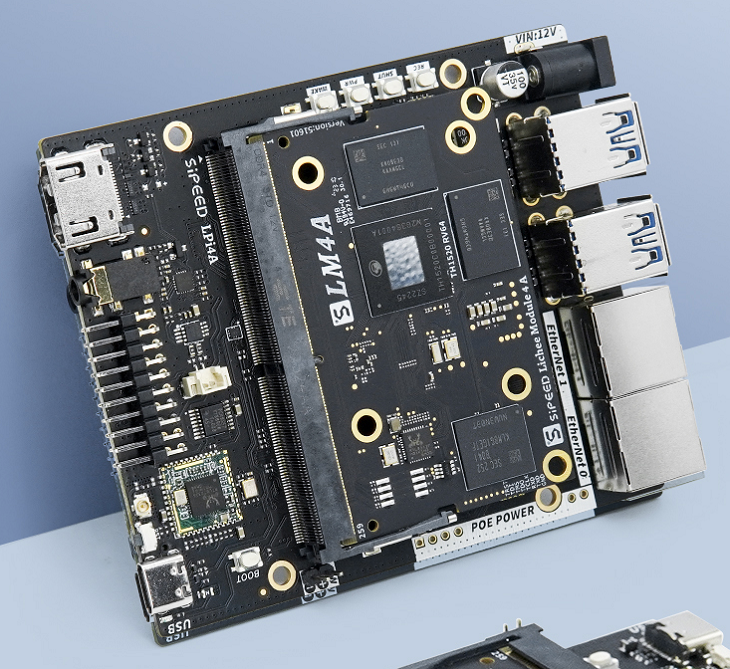
Demonstration Environment
All installation operations in this tutorial are demonstrated using the following environment:
- System and Version: Ubuntu 22.04.5 LTS
- Architecture: x86_64
- LicheePi4A Specs: 16GB RAM + 128GB eMMC
For unofficial environments that might be used, refer to this page for submitting issues.
Boot Methods Overview
LicheePi4A supports two boot methods: SD Card Boot and eMMC Boot. Follow the relevant section based on your needs.
SD Card Boot
Attention! No need to change the DIP switch to boot from the SD card! Set the DIP switch as per the eMMC configuration.
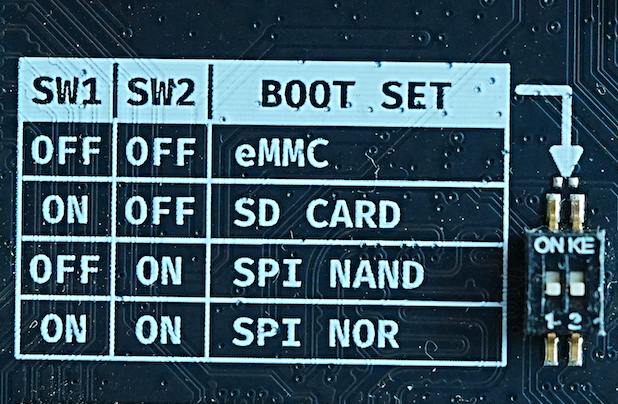
The DIP switch is located on the underside of the board. You need to remove the board to access it. The correct configuration is with both switches set to the downward position.
Note! Some early versions of the LicheePi4A board do not have a DIP switch.
Additionally, SD cards may have compatibility issues. Please check the LicheePi 4A SD Card Compatibility List to see if your SD card has any known compatibility issues.
Preparation
Obtain SD card images
Download the LicheePi4A SD card boot system image with the sdcard- prefix from the following links:
The 20240720 image uses Kernel 5.10, which is relatively mature and performs more stably in video encoding/decoding and various applications.
The 20250110 image uses Kernel 6.6, which may have some unknown issues. Known issues include video stuttering and USB power loss. These problems are currently being addressed.
Please choose the appropriate image based on your needs after reading the above description.
The following demonstrates the process using the 20250110 image as an example:
Note: The downloaded .zst compressed file is approximately 1.4GB. Ensure that you have at least 12GB of free space on your device to avoid running out of space during the download and extraction process.
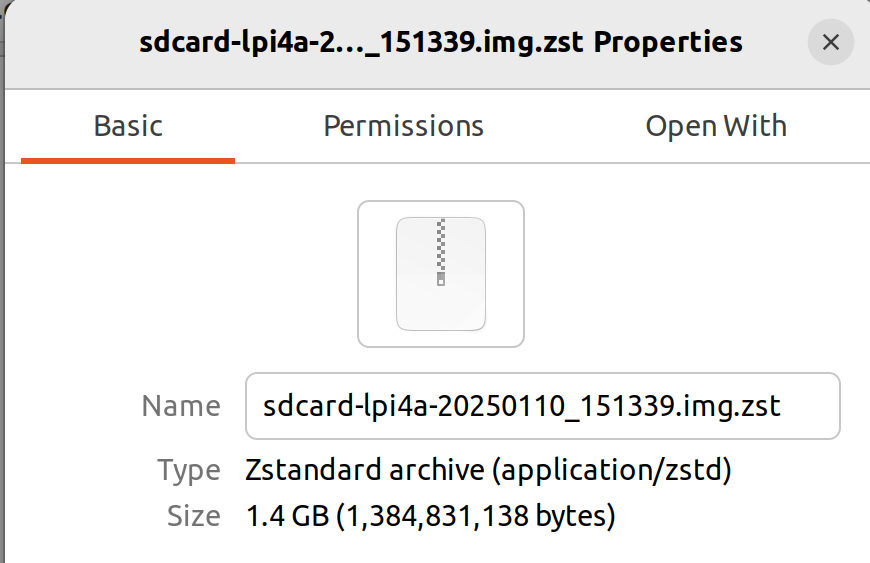
If downloading via a web browser, click the link to start the download. Your browser will automatically handle the file download. Confirm the download and ensure the file is saved locally.

If you prefer to download via the command line, tools like wget and curl can be used. In this guide, we use wget as the download tool.
In most demonstration environments, wget is pre-installed. If wget is not installed, use the following command to install it:
sudo apt install wget

Note: The sudo command requires a password for execution. Ensure you know the password before proceeding. This will not be repeated in subsequent steps.
Once installed, use the following command to download the image archive:
wget https://mirror.iscas.ac.cn/revyos/extra/images/lpi4a/20250110/sdcard-lpi4a-20250110_151339.img.zst

After downloading, you will obtain a file named sdcard-lpi4a-20250110_151339.img.zst. This is not the final image file but a compressed archive. You need to extract the compressed file sdcard-lpi4a-20250110_151339.img.zst to obtain the final image file sdcard-lpi4a-20250110_151339.img.
In the [demonstration environment](#Demonstratio- Environment) mentioned earlier, .zst files can be extracted using various tools such as zstd, tar, or 7z. This guide demonstrates one method using the zstd tool via the command line. First, you need to install the zstd package on your system before extracting the file.
If you are unsure whether zstd is already installed on your system, execute the following command to check the version of zstd. If a version is displayed, it indicates that zstd is installed.
zstd --version

If the version is displayed, like the example below, you have zstd is already installed.
*** zstd command line interface 64-bits v1.4.8, by Yann Collet ***
If no version information is displayed, install zstd using the following commands:
sudo apt update
sudo apt install zstd
![]()
After installing zstd, you can extract the image file. Note: The extracted file will be approximately 10.2GB in size. Ensure you have enough local storage space before proceeding with the extraction!
sudo unzstd sdcard-lpi4a-20250110_151339.img.zst
Once the extraction is complete, you will have the file sdcard-lpi4a-20250110_151339.img. At this point, the image file has been successfully obtained in the demonstration environment.
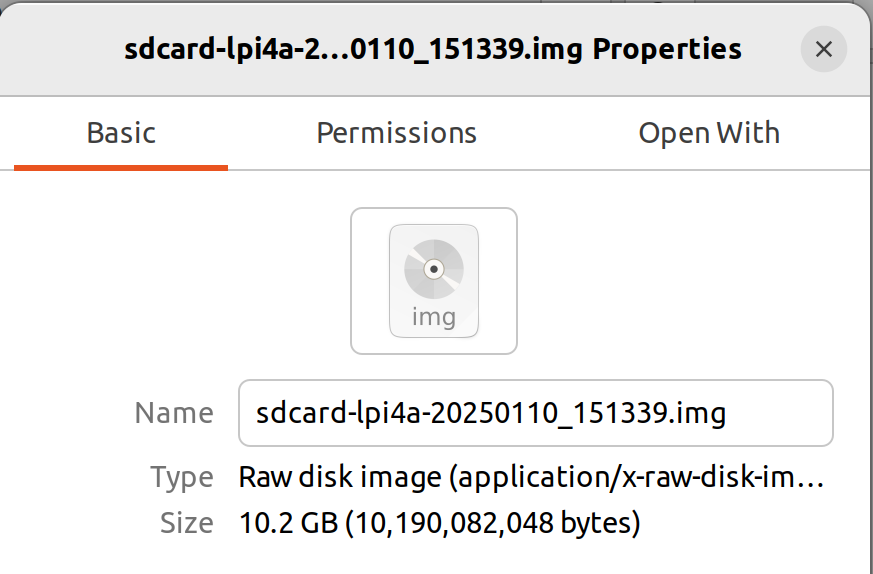
Hardware preparation
Prepare a MicroSD card reader and a MicroSD card. Note that there are compatibility issues with MicroSD cards. RevyOS provides a list of tested MicroSD cards.
If your MicroSD card is not on the list of known compatible cards and you encounter issues such as failure to write the image or failure to boot after writing, refer to this page to submit an issue. You can also try the eMMC boot guide for writing the image.
Image Writing Methods
If you choose to boot from an SD card, there are two methods to write the image to the MicroSD card:Using a graphical interface tool like BalenaEtcher, or Using the dd command in the command line.
Writing the Image with BalenaEtcher
Download the BalenaEtcher tool from its official website: https://etcher.balena.io/. Select the appropriate file for your system. For the [demonstration environment](#Demonstratio- Environment), download and extract Etcher for Linux x64 (64-bit) (zip).

Insert the SD card into the card reader and connect it to your computer.
Run BalenaEtcher to write the image to the SD card.
In the BalenaEtcher window, click "Flash from file" to select the image file.
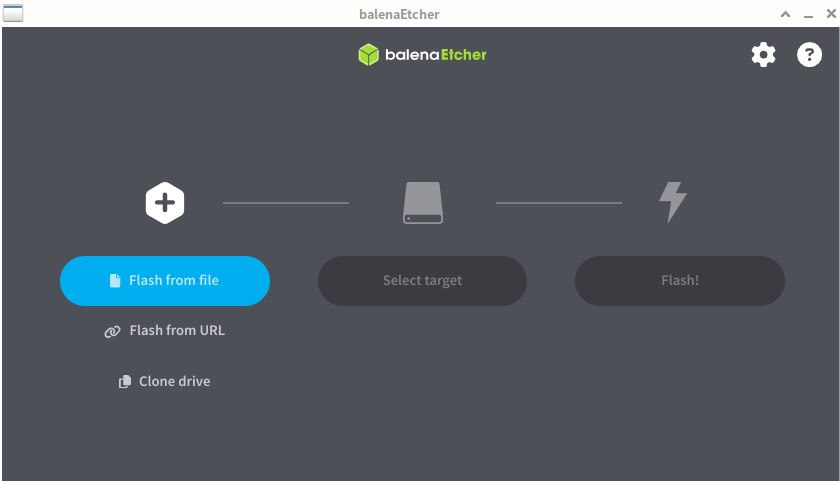
After selecting the image file, choose the target device in the second field.

Once both options are selected, click "Flash" to write the image.

After some time, a message will indicate that the writing process is complete.

Writing the Image with dd
dd is a powerful command-line tool in Linux and Unix-like systems, used to copy files or data with specified sizes and formats. It is usually pre-installed.
Follow these steps to write the image using dd:
First, check the list of devices by running the following command before and after inserting the SD card to identify the corresponding device name of the SD card:
lsblk
The device name for the SD card might be /dev/sda or /dev/mmcblk0. In the demonstration environment, the SD card partition is identified as /dev/sda after executing lsblk.

Before writing the image, unmount any mounted partitions of the SD card. If there are multiple partitions, unmount each one:
sudo umount /dev/sdX1
If no partitions are mounted, the umount command will display not mounted, and no further action is needed.
After unmounting the partitions, it is recommended to run the sudo sync command to ensure all data is synchronized.
![]()
After completing the above steps, you can proceed with writing the image. Before writing, ensure that the correct device is set in the of= parameter. In the demonstration environment, the SD card is recognized as sda. Replace of= with your device's partition accordingly.
sudo dd if=./sdcard-lpi4a-20250110_151339.img of=/dev/sdX bs=4M status=progress

After the writing process is complete, run the sudo sync command again to ensure data synchronization. Then confirm that the SD card is in an unmounted state before safely removing it and inserting it into the development board.
Booting the System via SD Card
After writing the image, insert the SD card into the slot shown below.
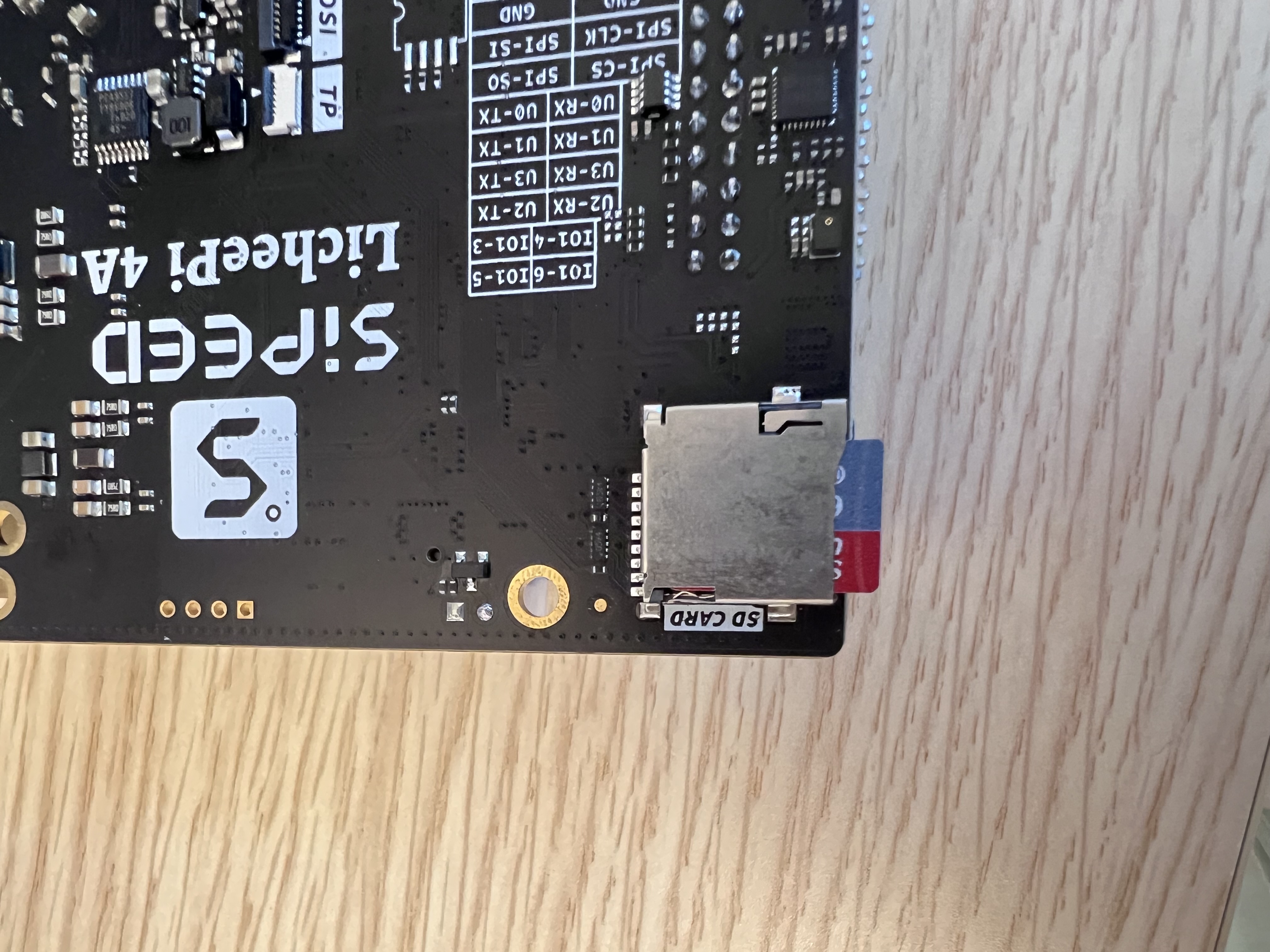
First, connect the HDMI cable (if an external display is needed). Then, use the USB-A to USB-C cable included in the package: connect the USB-C end to the development board and the USB-A end to a USB power source with at least 5V2A output to boot the system.
Booting from eMMC
When booting the image from eMMC, there are two methods for writing the image: with or without a serial connection. The operations differ slightly, and both methods are introduced below.
Note! When booting from eMMC, remove the SD card first!
Preparation
Hardware Preparation
Installing the Image Writing Tool
To boot from eMMC, you need to write the u-boot, boot, and root files into the eMMC using the fastboot tool. First, confirm whether fastboot is installed.
If you are unsure whether fastboot is installed, run the following command. This command checks the version of fastboot, and the output will indicate whether the fastboot package is pre-installed.
fastboot --version

If the version is displayed correctly, it means fastboot is successfully installed. For example, the following output indicates that fastboot is installed:
fastboot version 28.0.2-debian
Installed as /usr/lib/android-sdk/platform-tools/fastboot
If no version is displayed, please install fastboot in your command line
sudo apt install fastboot
![]()
sudo apt install fastboot
Install Serial Console Tool
When using a serial connection, a serial console tool is required for monitoring. There are many serial console tools available, such as minicom, screen, and picocom. In this guide, we will use minicom for demonstration.
sudo apt install minicom
After installation, you can confirm if minicom was successfully installed by checking its version:
minicom -version
Obtain the Image
Download the system image for LicheePi4A from the following links:
Note!
The u-boot images for different memory configurations of LicheePi4A are not interchangeable. Please select the appropriate image based on the version of your core board.
| Memory and Storage Combination | Corresponding u-boot Image |
|---|---|
| 8G RAM + 8G eMMC | u-boot-with-spl-lpi4a-main_8gemmc.bin |
| 8G RAM + 32G eMMC | u-boot-with-spl-lpi4a-main.bin |
| 16G RAM | u-boot-with-spl-lpi4a-16g-main.bin |
If you are unsure about the specifications of your core board, you can scan the QR code on the core board to check. When LicheePi4A is shipped, a QR code sticker is attached to the core board. Scanning it will display the memory and storage configuration of the core board.
For example, for a 16G RAM + 128G eMMC configuration, you can find the QR code sticker here:
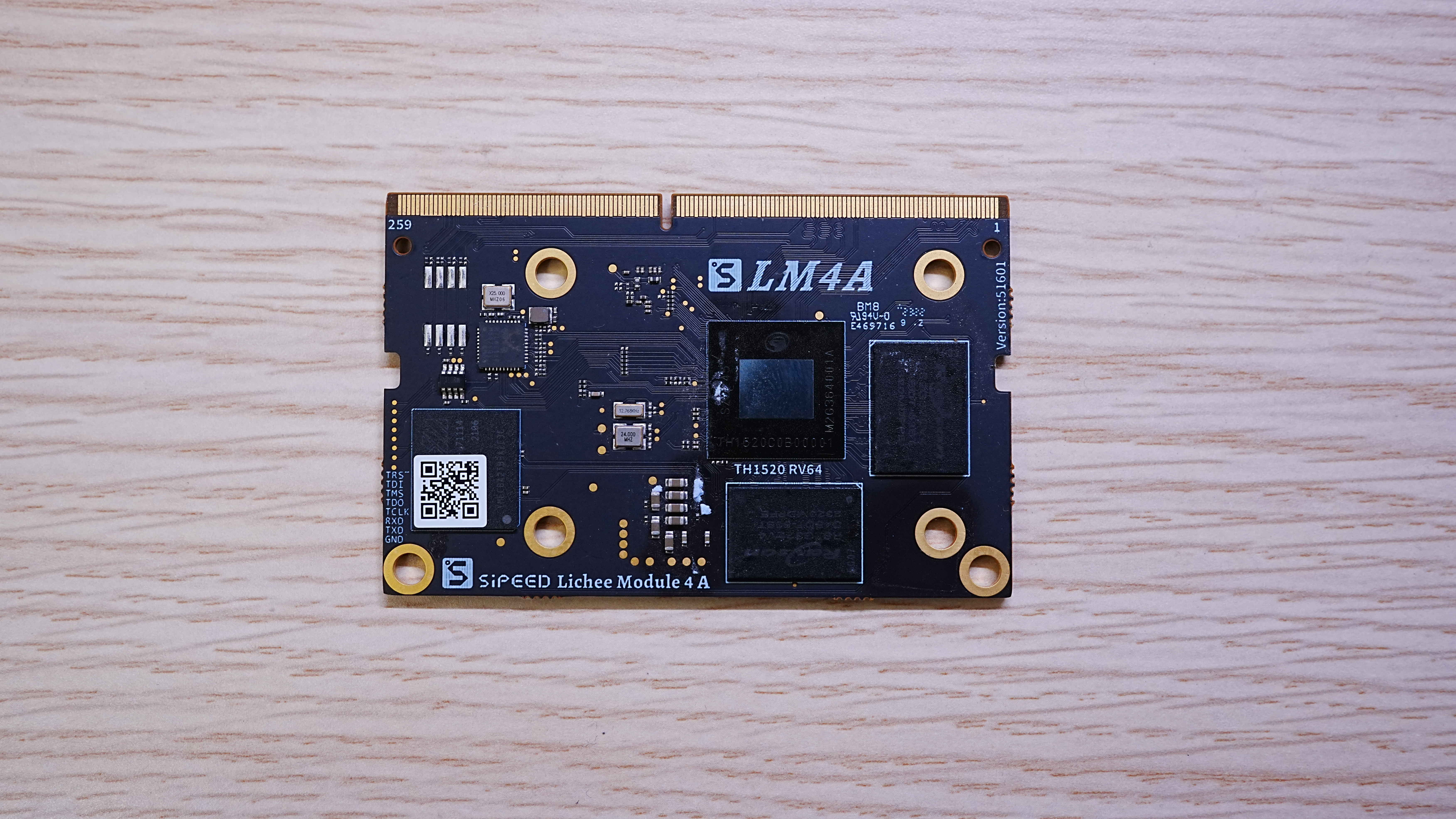
Scanning the QR code will display the following:

After confirming the board specifications, use wget to download the u-boot, boot, and root files:
sudo wget u-boot-with-spl-lpi4a-16g-main.bin
sudo wget boot-lpi4a-20250110_151339.ext4.zst
sudo wget root-lpi4a-20250110_151339.ext4.zst
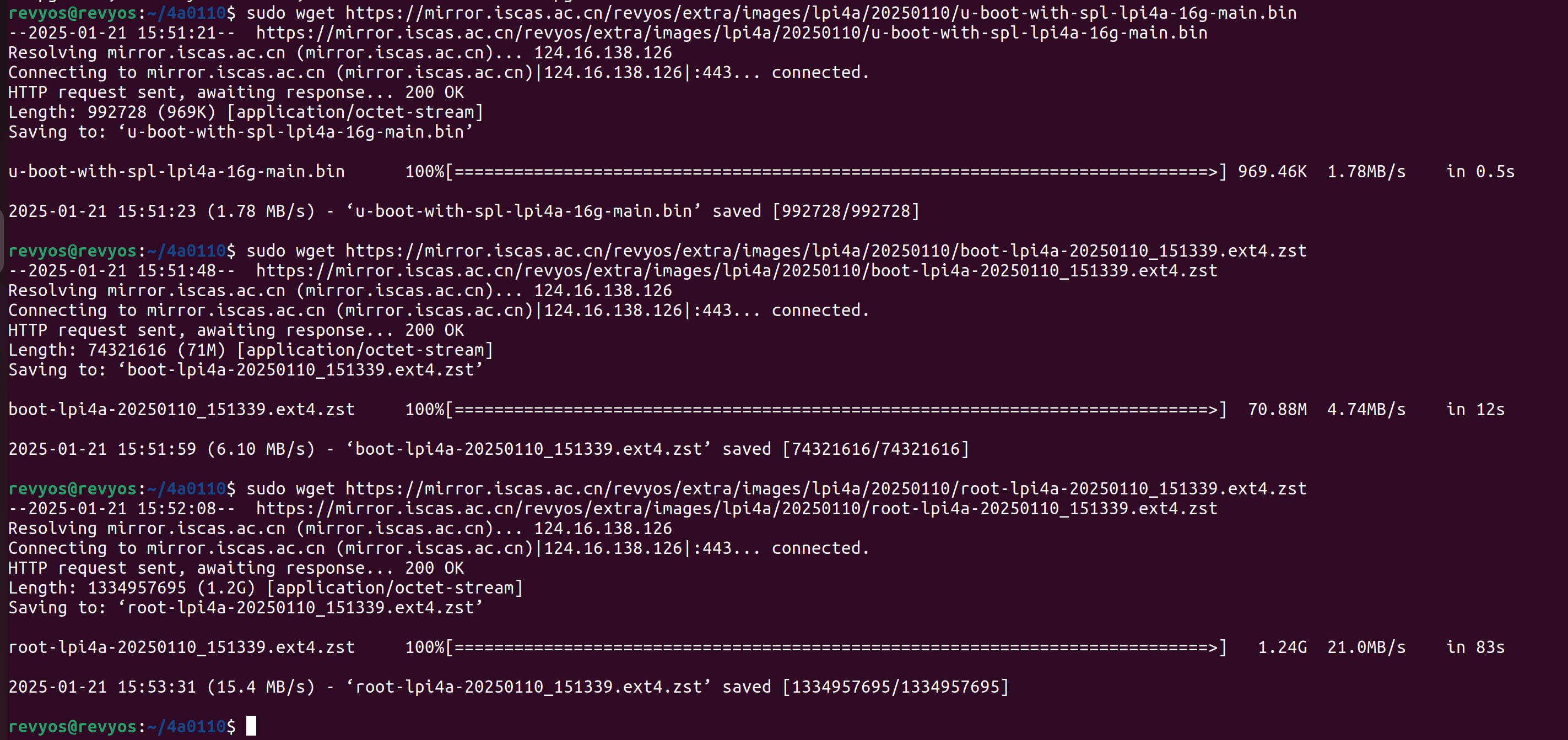
After downloading, use the unzstd command to decompress the root and boot files:
unzstd boot-lpi4a-20250110_151339.ext4.zst
unzstd root-lpi4a-20250110_151339.ext4.zst
Once decompression is complete, you will have the files required for writing the eMMC image.

Writing the Image to eMMC (Without Serial Connection)
Press and hold the BOOT button on the board, then connect it to your computer. The board will enter flashing mode.
Writing the Image to eMMC (With Serial Connection)
Using minicom
First, open minicom from the terminal to access the serial console:
sudo minicom
If you need to specify the serial device (e.g., the commonly used USB-to-serial device ttyUSB0), you can use:
sudo minicom -D /dev/ttyUSB0
Using screen
Open screen from the terminal. Replace /dev/ttyUSB0 with your device, and 115200 with the baud rate:
sudo screen /dev/ttyUSB0 115200
As shown in the diagram, connect the serial port to the board. The USB end connects to the computer, while the Type-C port on the board connects to the computer using a USB-Type-C cable.
For the serial connection, the red circle (first row, second pin from the left) is GND, the yellow circle (first row, fifth pin) is TX, and the green circle (second row, fifth pin) is RX. The connection to the host should follow TX to RX, RX to TX, and GND to GND.
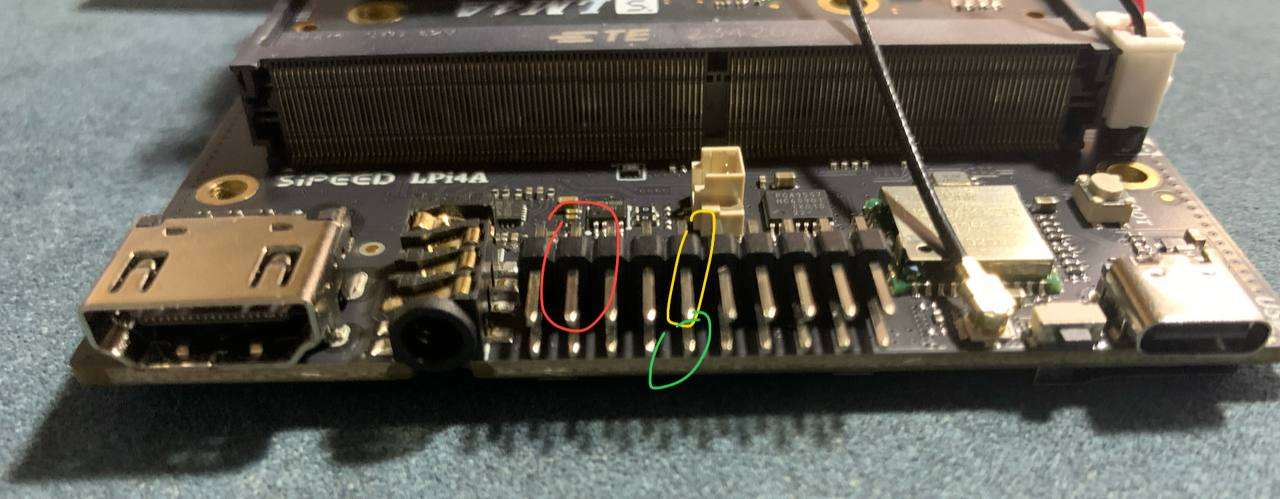
After connecting, press any key in the serial console to interrupt the auto-start process. You will see the following u-boot command line (see the last line):
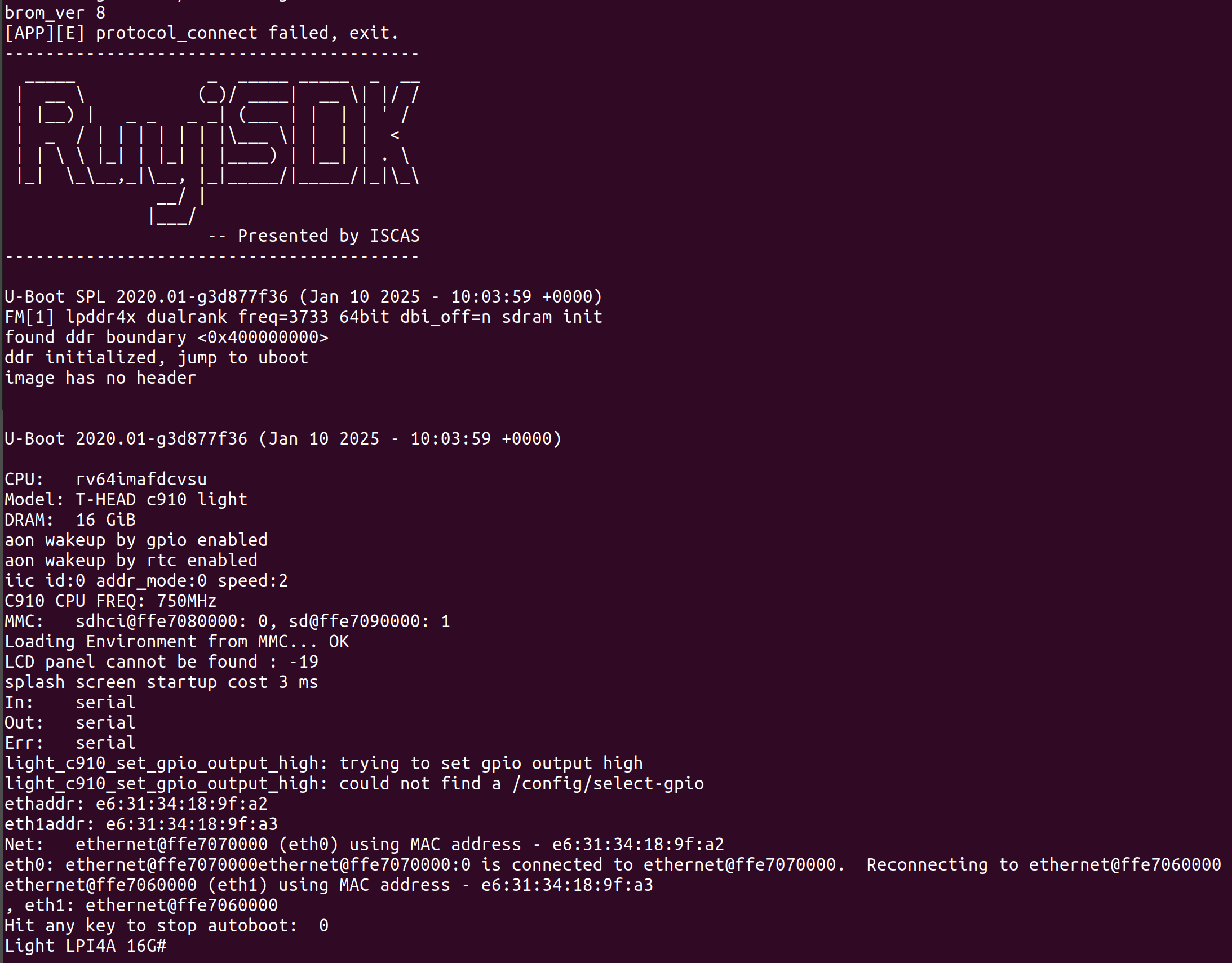
In the serial console window, enter:
fastboot usb 0
The output will show:
Light LPI4A 16G# fastboot usb 0
dwc3_gadget_start maximum_speed:5 revision:0x5533330b
dwc3_gadget_start DWC3_DCFG:0x80804
This indicates that fastboot can be used for flashing. Open another terminal window to proceed with image flashing.
Flashing the Image
All commands below should be executed in the directory where the image files are located. Pay attention to the file paths and names.
Put the Device into U-Boot Fastboot Mode
If the lsusb result is not ID 1234:8888 Brain Actuated Technologies USB download gadget, run the following commands:
fastboot flash ram u-boot-with-spl-lpi4a-16g.bin # Replace with the u-boot image for your specific model
fastboot reboot
sleep 1
Flash the Image
fastboot flash uboot u-boot-with-spl-lpi4a-16g.bin
fastboot flash boot boot-lpi4a-20240720_171951.ext4
fastboot flash root root-lpi4a-20240720_171951.ext4
fastboot will display the flashing progress. If a serial connection is established, you can view the detailed progress in the serial console (the example below shows flashing boot, with a size of 92,886,476 bytes. You can see the flashed content at cmd_parameter: boot, imagesize: 92886476).
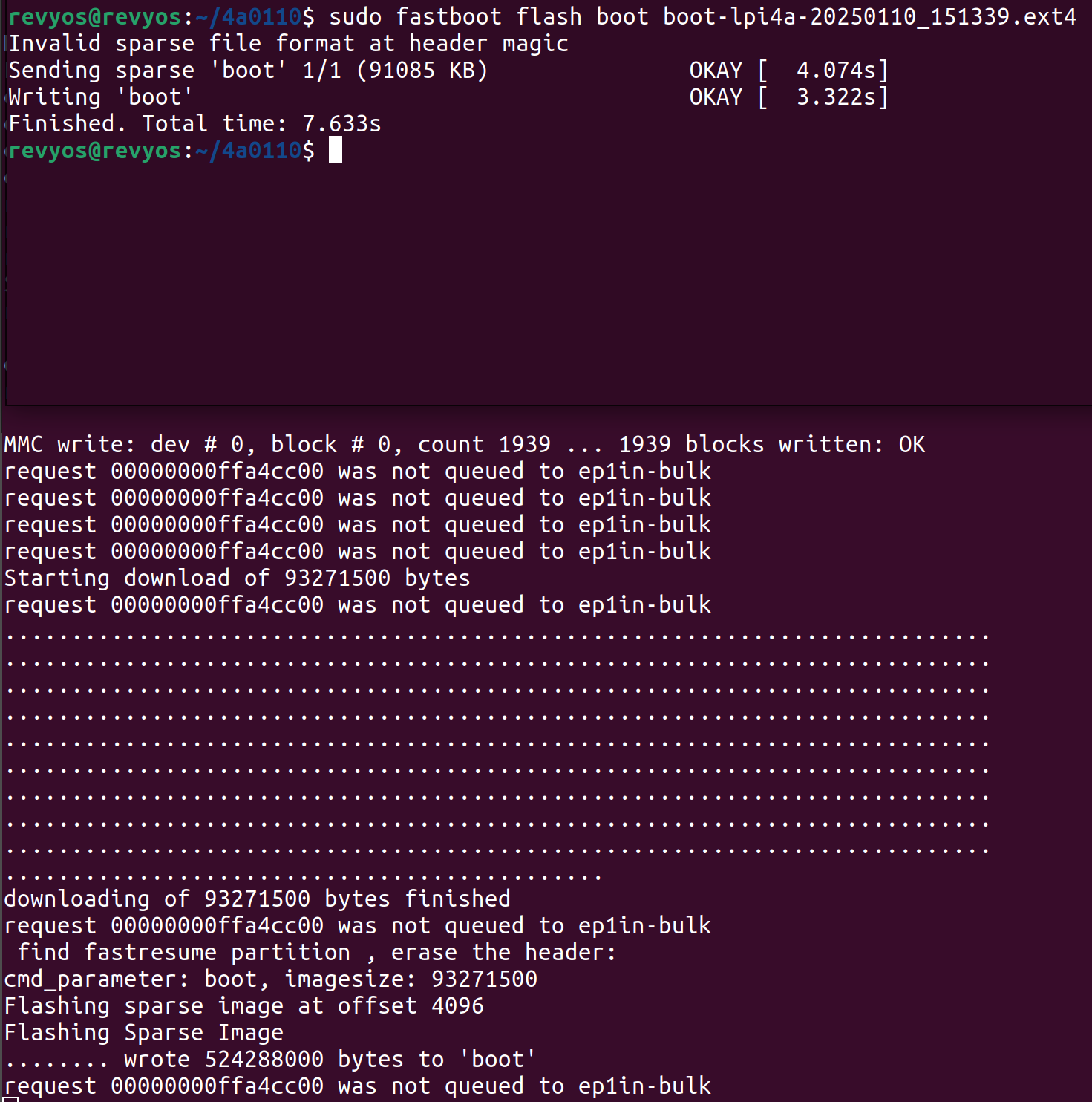
Once flashing is complete, disconnect the USB-Type-C cable from the computer and the board, connect the power cable, and the system will boot up.
Potential Issues
Linux only: stuck at < waiting for any device >
If the lsusb output shows a download device but the fastboot command remains stuck at < waiting for any device >, try running the fastboot command with sudo.
Issues After Major Version Upgrade
If you use a serial connection to enter U-Boot and start fastboot flashing (see here), the issue might be caused by U-Boot retaining old environment variables. Please enter the following command in the U-Boot serial console:
env default -a -f; env save; reset
If this version includes partition table changes, additionally run:
run gpt_partition
User Login
- Login account:
debian - Password:
debian